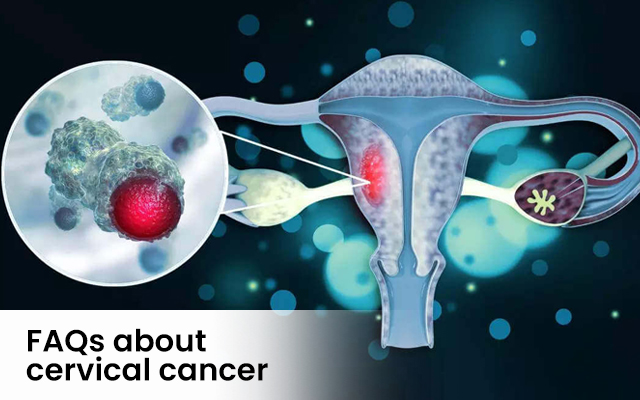According to this IARC report, there were an estimated 96,922 new cases of cervical cancer and 60,078 deaths from the disease in India in 2020. This accounts for nearly one-third of all cancers among women in India. As cervical cancer awareness and screening have advanced, more women are seeking information on risk factors, symptoms, and treatment options. Here, the leading medical oncologist in Kolkata has compiled answers to some of the most common, burning questions patients have about this disease.
What causes cervical cancer?
Cervical cancer is nearly always caused by the human papillomavirus (HPV). HPV is extremely common – most sexually active individuals contract it at some point. While nine out of ten HPV cases resolve without issue, sometimes the virus lingers and triggers genetic changes that lead to precancer or cancer.
Who is most at risk?
Women who contract high-risk strains of HPV like HPV-16 and HPV-18 are at greatest risk for developing cervical cancer. Having multiple sexual partners, smoking, HIV/AIDS, and taking oral contraceptives for five or more years also raise your risk.
What are the main symptoms?
Abnormal vaginal bleeding between periods, after intercourse, or after menopause is a hallmark symptom. Bleeding may be light or heavy. Pelvic pain, discomfort during sex, and foul-smelling vaginal discharge can also signal cervical cancer. According to a cancer doctor in Kolkata, advanced cancer may cause back, leg, or bone pain.
When should screening start and end?
Current guidelines recommend starting Pap tests at age 21. Women ages 21-29 are usually advised to get a Pap test every three years. Ages 30-65 can get a Pap test plus an HPV test every five years or just a Pap test every three years. Screening can end at age 65-70 for women with a history of normal results.
What do abnormal test results mean?
Both Pap tests and HPV tests can yield abnormal results pointing to dysplasia (precancer) or cancer. An ASC-US Pap result means atypical cells of uncertain significance were found. A Pap showing LSIL or HSIL points to low-grade or high-grade lesions. A positive HPV test means a high-risk strain was detected. Any abnormal finding warrants further testing.
What are the treatment options?
Early-stage cervical cancer is highly treatable. Small lesions or precancer may be removed via laser ablation, cryotherapy, cone biopsy, or LEEP. Advanced cancer requires surgery, radiation, chemotherapy, or a combination. The five-year survival rate for early-stage disease is over 90%, underscoring the importance of screening.
How can cervical cancer be prevented?
The HPV vaccine is the best prevention. Girls and boys should receive it at ages 11-12. The vaccine prevents infection from cancer-causing HPV strains. Using condoms during sex offers some protection as well. Quitting smoking and getting screened regularly significantly lower risk.We hope these expert insights help address your key questions about this highly preventable and treatable cancer. The best way to combat the onslaught of cervical cancer is through proactive approaches like HPV screening under the guidance of an expert medical oncologist in Kolkata.


